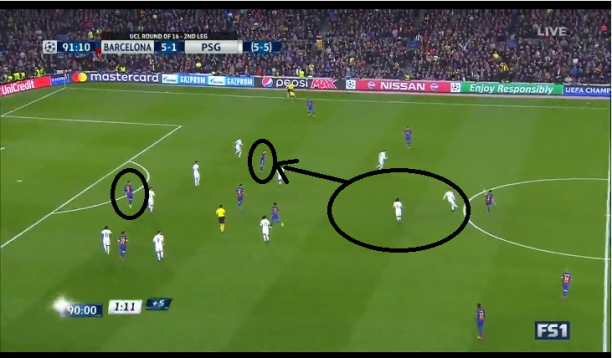It ended 4-0 at the Parc des Princes last month and almost ninety-nine percent of the football world believed that PSG had sent one of the title favorites out of the 2016/17 Champions League. PSG finally after spending millions of Euros on transfers seemed to have joined the European elite after a stunning home performance against the Catalans. No team ever in the history of Champions League had ever turned a 4 goal deficit until FC Barcelona, arguably the best team of the previous decade, rewrote the history at the Camp Nou.
86 minutes into the game, riding on Cavani’s volley for the crucial away goal, it seemed as though Unai Emery and his men had done the job to seal the place in the quarter-finals. But two goals from Neymar and a last gasp winner from Sergi Roberto denied the French outfit and most importantly sent Barcelona once again into the history books.
After a poor display in France, Luis Enrique opted to change his side’s system and adopted the 3-4-3(diamond) formation. He fielded his side in the 3-diamond-3 for the first time against their title rivals Atletico Madrid after their loss to PSG. He experimented this 3-diamond-3 along with the 3-1-4-2 in the games against Sporting and Celta Vigo in which they scored eleven goals and this system seemed to get the best out of their attacking players. The key change was with the wingers who were stationed very wide(Rafinha and Neymar) which allowed Messi to drift into the centre along with Suarez to play as the second striker.
Against PSG, Messi played at the tip of the diamond but did fall back in certain situations to collect the ball from deep to act as the playmaker. This meant that Rakitic would often slot at the tip of the diamond(space left by Messi).
Enrique brought on Turan for Iniesta while Sergi Roberto and Andre Gomes replaced Rafinha and Rakitic. After the substitution of Rafinha, Turan went into his natural position to play on the right wing.

One of the most important things in this system is the positioning of the players and their connectivity on the whole. The wingers stayed very wide and two forwards were always in the middle to keep the defenders busy. Here the ball near full back would mark the ball near winger and the two players in the middle will occupy the three defenders which would leave the ball far winger free. Also Suarez was always a thorn for the PSG defenders as he was always on the move and in this instance is ready to run beyond his marker which opens up a passing option for Neymar.

After Neymar’s freekick, Messi’s natural movement drew him towards the ball to a much deeper position. Here he is seen to have two or more passing options but he does what he often does best. He collects the ball from the defender and dribbles with it forward and PSG unlike the first leg drop deeper and deeper instead of pressing him. This deep positioning of Messi without any pressure allows him to ping a ball over the PSG defence for Suarez which leads to the penalty. Neymar coolly converts the penalty to make it 5-1 to Barcelona.
The search was on for the next goal which would mark the greatest comeback ever in Champions league knock out stage history. Needing one more goal, Messi pushed forward moving out from the space in the centre of the pitch which Busquets now occupied all by himself.


As we can see from the above screenshots the search for the final goal started with Messi joining the attack and Busquets now acting as the playmaker.
Much should be stated about Barcelona’s pressing in the middle and PSG’s defensive set up in the last 10 minutes. PSG were quite content with their away goal and at one stage needed to see off only a handful of minutes and in return Barcelona had to score 3 goals which PSG never saw coming. PSG couldn’t free itself through long balls as Cavani was too deep since they defended in a 4-5-1-0/4-3-3-0 shape. In hindsight, PSG could have taken the risk in letting Cavani stay ahead which would have forced Barcelona to be cautious and push one less body forward.
Conclusion

Image credits: fourfourtwo.com/statszone
In the final 10 minutes, Barca played in a 2-2-6 block on most occasions which allowed them to keep the ball high and circulate the ball as high up the pitch as possible without giving it to the Parisians. On the few occasions,they lost the ball they pressed PSG in a 3-3-2-2 shape. This allowed them to keep the ball well and they maintained 85% of the possession in the last 10 minutes. PSG could only pass the ball nine times during the last 10 minutes and only three times did the pass find a PSG player. And those 3 successful passes were from the kickoff after the three Barcelona goals. This show clearly how lost PSG were on the pitch. Barcelona enjoyed one of their most memorable days in their history thanks to one of the worst chokes by a team in the Champions League.









Recent Comments